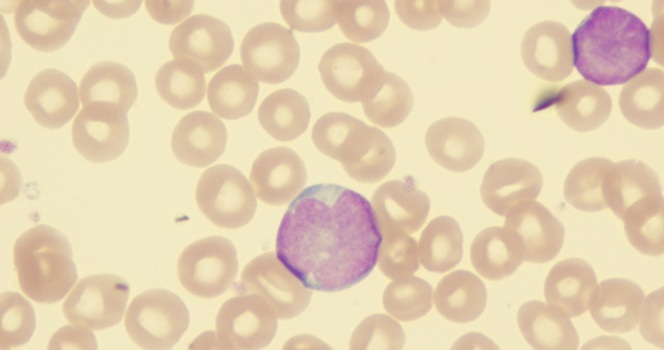IL-1RA Antibodies in Myocarditis After SARS-CoV-2 Vaccination
|
By LabMedica International staff writers Posted on 26 Sep 2022 |

Myocarditis associated with messenger RNA (mRNA) vaccines against severe acute respiratory syndrome coronavirus 2 (SARS-CoV-2) predominantly affects male adolescents and young male adults (14 to <30 years of age) and typically occurs after receipt of the second vaccine dose.
In adults with critical coronavirus disease 2019 (Covid-19) and in cases of multisystem inflammatory syndrome in children (MIS-C), it has recently been discovered that neutralizing autoantibodies targeting the endogenous interleukin-1 receptor antagonist (IL-1RA), which inhibits interleukin-1 signaling and inflammation.
A large team of Medical Scientists led by those at Saarland University (Homburg, Germany) evaluated the prevalence of antibodies neutralizing IL-1RA and progranulin, which inhibits tumor necrosis factor signaling, in 69 patients (14 to 79 years of age) who had clinically suspected myocarditis after SARS-CoV-2 vaccination. A total of 61 patients underwent endomyocardial biopsy. Myocarditis was confirmed by biopsy in 40 of 61 patients.
For immunohistological detection of cardiac immune cells, a monoclonal rabbit-anti-CD3 antibody (Novocastra Laboratories, Newcastle upon Tyne, UK), a monoclonal mouse anti-human CD68 antibody and a monoclonal mouse anti-human HLA-DR alpha-chain antibody (DAKO, Hamburg, Germany) were used. Immunohistochemical analysis was performed on an automated immunostainer following the manufacturer’s protocol (Benchmark; Ventana Medical Systems, Tucson, AZ, USA) and using the Ventana ultraView detection system and diaminobenzidine as substrate. ELISA for antibodies was performed including assays for IgG1, IgG2, IgG3 and IgG4 (Binding Site Group, Birmingham, UK) and IL-1-Ra plasma levels were determined with a commercially available ELISA kit (Invitrogen/ThermoFisher, Carlsbad, CA; USA). Isoelectric focusing (IEF) and Western blotting (including native Western blotting with non-reducing sample pretreatment and gradient gels without SDS) was also performed.
The investigators reported that among patients with histologically confirmed myocarditis, anti–IL-1RA antibodies were found in 9/12 patients (75%) younger than 21 years of age, as compared with 3/28 patients (11%) 21 years of age or older. Anti–IL-1RA antibodies were not detectable in the 21 patients in whom biopsy ruled out the diagnosis of myocarditis. IL-1RA antibody–positive patients with biopsy-confirmed myocarditis had an early onset of symptoms, which occurred mostly after receipt of the second vaccine dose, and a milder course of myocarditis than patients with biopsy-confirmed myocarditis but without anti–IL-1RA autoantibodies.
At the time of acute myocarditis, the mean (±SD) free IL-1RA plasma level in 15 patients who were seropositive for anti–IL-1RA antibodies was 236 ± 82 pg/mL, whereas the level was 1,736 ± 312 pg/mL in 33 patients without anti–IL-1RA antibodies and 1,599 ± 277 pg/mL in 21 patients in whom histologic testing ruled out the diagnosis of myocarditis. IL-1RA plasma levels correlated with markers of cardiac damage (troponin T, creatine kinase, creatine kinase MB, or pro–B-type natriuretic peptide), cardiac-tissue infiltration of CD3+ T cells and CD68+ macrophages, and systemic inflammation (C-reactive protein).
The authors concluded that in their study of SARS-CoV-2 vaccination–associated myocarditis and anti–IL-1RA antibodies should be interpreted within the context that the transiency of hyperphosphorylation and patients’ HLA haplotypes were not known. Neutralizing antibodies against IL-1RA and a hyperphosphorylated IL-1RA isoform were observed in young male patients with biopsy-confirmed myocarditis after the receipt of SARS-CoV-2 mRNA vaccine. These antibodies impaired IL-1RA bioactivity in vitro, were associated with low circulating levels of IL-1RA, and were found in patients with biomarker evidence of cardiac damage and inflammation. The study was published on September 21, 2022 in the journal the New England Journal of Medicine.
Related Links:
Saarland University
Novocastra Laboratories
DAKO
Ventana Medical Systems
Binding Site Group
Invitrogen/ThermoFisher
Latest Pathology News
- Tunable Cell-Sorting Device Holds Potential for Multiple Biomedical Applications
- AI Tool Outperforms Doctors in Spotting Blood Cell Abnormalities
- AI Tool Rapidly Analyzes Complex Cancer Images for Personalized Treatment
- Diagnostic Technology Performs Rapid Biofluid Analysis Using Single Droplet
- Novel Technology Tracks Hidden Cancer Cells Faster
- AI Tool Improves Breast Cancer Detection
- AI Tool Predicts Treatment Success in Rectal Cancer Patients
- Blood Test and Sputum Analysis Predict Acute COPD Exacerbation
- AI Tool to Transform Skin Cancer Detection with Near-Perfect Accuracy
- Unique Immune Signatures Distinguish Rare Autoimmune Condition from Multiple Sclerosis
- Simple Optical Microscopy Method Reveals Hidden Structures in Remarkable Detail
- Hydrogel-Based Technology Isolates Extracellular Vesicles for Early Disease Diagnosis
- AI Tool Improves Accuracy of Skin Cancer Detection
- Highly Sensitive Imaging Technique Detects Myelin Damage
- 3D Genome Mapping Tool to Improve Diagnosis and Treatment of Genetic Diseases
- New Molecular Analysis Tool to Improve Disease Diagnosis
Channels
Clinical Chemistry
view channel
Chemical Imaging Probe Could Track and Treat Prostate Cancer
Prostate cancer remains a leading cause of illness and death among men, with many patients eventually developing resistance to standard hormone-blocking therapies. These drugs often lose effectiveness... Read more
Mismatch Between Two Common Kidney Function Tests Indicates Serious Health Problems
Creatinine has long been the standard for measuring kidney filtration, while cystatin C — a protein produced by all human cells — has been recommended as a complementary marker because it is influenced... Read moreMolecular Diagnostics
view channel
Simple Urine Test to Revolutionize Bladder Cancer Diagnosis and Treatment
Bladder cancer is one of the most common and deadly urological cancers and is marked by a high rate of recurrence. Diagnosis and follow-up still rely heavily on invasive cystoscopy or urine cytology, which... Read more
Blood Test to Enable Earlier and Simpler Detection of Liver Fibrosis
Persistent liver damage caused by alcohol misuse or viral infections can trigger liver fibrosis, a condition in which healthy tissue is gradually replaced by collagen fibers. Even after successful treatment... Read moreHematology
view channel
Platelet Activity Blood Test in Middle Age Could Identify Early Alzheimer’s Risk
Early detection of Alzheimer’s disease remains one of the biggest unmet needs in neurology, particularly because the biological changes underlying the disorder begin decades before memory symptoms appear.... Read more
Microvesicles Measurement Could Detect Vascular Injury in Sickle Cell Disease Patients
Assessing disease severity in sickle cell disease (SCD) remains challenging, especially when trying to predict hemolysis, vascular injury, and risk of complications such as vaso-occlusive crises.... Read more
ADLM’s New Coagulation Testing Guidance to Improve Care for Patients on Blood Thinners
Direct oral anticoagulants (DOACs) are one of the most common types of blood thinners. Patients take them to prevent a host of complications that could arise from blood clotting, including stroke, deep... Read moreImmunology
view channel
New Test Distinguishes Vaccine-Induced False Positives from Active HIV Infection
Since HIV was identified in 1983, more than 91 million people have contracted the virus, and over 44 million have died from related causes. Today, nearly 40 million individuals worldwide live with HIV-1,... Read more
Gene Signature Test Predicts Response to Key Breast Cancer Treatment
DK4/6 inhibitors paired with hormone therapy have become a cornerstone treatment for advanced HR+/HER2– breast cancer, slowing tumor growth by blocking key proteins that drive cell division.... Read more
Chip Captures Cancer Cells from Blood to Help Select Right Breast Cancer Treatment
Ductal carcinoma in situ (DCIS) accounts for about a quarter of all breast cancer cases and generally carries a good prognosis. This non-invasive form of the disease may or may not become life-threatening.... Read moreMicrobiology
view channel
Rapid Diagnostic Test Matches Gold Standard for Sepsis Detection
Sepsis kills 11 million people worldwide every year and generates massive healthcare costs. In the USA and Europe alone, sepsis accounts for USD 100 billion in annual hospitalization expenses.... Read moreRapid POC Tuberculosis Test Provides Results Within 15 Minutes
Tuberculosis remains one of the world’s deadliest infectious diseases, and reducing new cases depends on identifying individuals with latent infection before it progresses. Current diagnostic tools often... Read more
Rapid Assay Identifies Bloodstream Infection Pathogens Directly from Patient Samples
Bloodstream infections in sepsis progress quickly and demand rapid, precise diagnosis. Current blood-culture methods often take one to five days to identify the pathogen, leaving clinicians to treat blindly... Read moreTechnology
view channel
Artificial Intelligence Model Could Accelerate Rare Disease Diagnosis
Identifying which genetic variants actually cause disease remains one of the biggest challenges in genomic medicine. Each person carries tens of thousands of DNA changes, yet only a few meaningfully alter... Read more
AI Saliva Sensor Enables Early Detection of Head and Neck Cancer
Early detection of head and neck cancer remains difficult because the disease produces few or no symptoms in its earliest stages, and lesions often lie deep within the head or neck, where biopsy or endoscopy... Read moreIndustry
view channel
Abbott Acquires Cancer-Screening Company Exact Sciences
Abbott (Abbott Park, IL, USA) has entered into a definitive agreement to acquire Exact Sciences (Madison, WI, USA), enabling it to enter and lead in fast-growing cancer diagnostics segments.... Read more






















